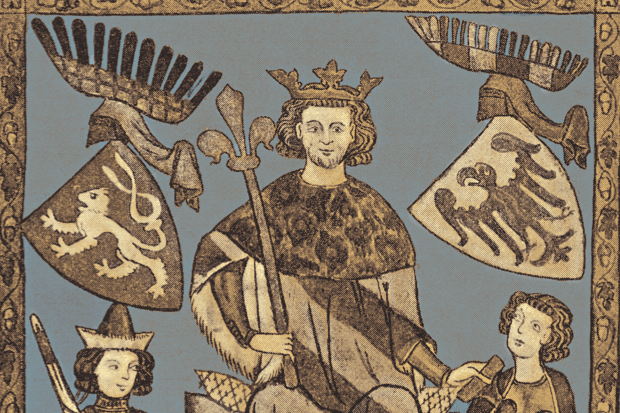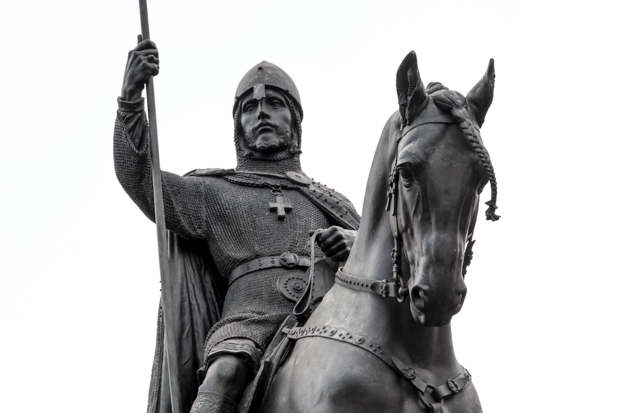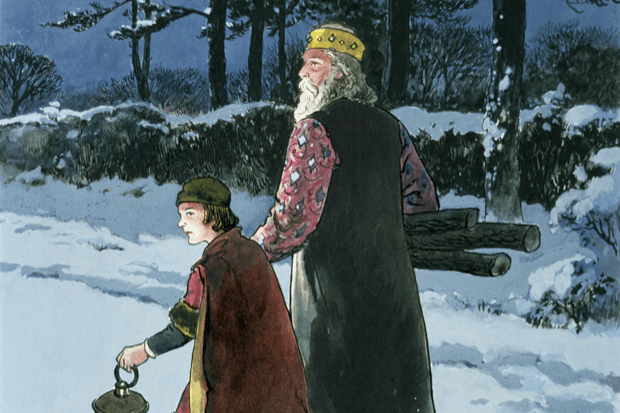Who was Good King Wenceslas, and was he actually good?
To those who only know Wenceslas from the popular Christmas carol, he is a kind-hearted king helping the poor. To the people of the Czech Republic, he is their patron saint and a national hero. Jonny Wilkes reveals the true, and tragic, history of Wenceslas I

“Good King Wenceslas looked out / On the Feast of Stephen / When the snow lay round about / Deep and crisp and even.” So begins the Christmas carol, first published in 1853 by English hymnwriter John Mason Neale, with the assistance of music editor Thomas Helmore. With a tune from the 13th century – unearthed in the Finnish song book Piae Cantiones, a collection of medieval songs published in 1582 – it tells of a king, Wenceslas, and his page who braved the winter weather to come to the aid of a poor peasant on the Feast of Stephen (better known now as Boxing Day).
Was Wenceslas a king?
The first thing to say about the real Wenceslas is that he was not actually a king, but Duke of Bohemia. The Holy Roman Emperor Otto I bestowed the more prestigious title on him posthumously, as well as being made patron saint of the Czech nation. But if the legends are to be believed, it can be said that he satisfied the “good” epithet. Indeed, during his lifetime he became known as Václav the Good.
Born c907 AD, Wenceslas I was raised a Christian by his grandmother Ludmila, his regent and a saint in her own right for her efforts to convert Bohemia. His pagan mother Drahormíra, however, grew jealous of this Christian influence and, in AD 921, conspired to have Ludmila murdered. For that, Wenceslas banished her when he came of age and took over governance himself.

As duke, he looked to end the religious conflicts, although he did still wish to see his lands converted to Christianity. To that end, he encouraged the work of missionary priests and founded a church that is now on the site of St Vitus Cathedral in Prague. But Bohemia came under threat from invasion by the forces of Saxon and East Frankish ruler Henry the Fowler, and raids by the Magyars from modern-day Hungary.
When he submitted to Henry, Wenceslas provoked the ire of some of his nobles, who plotted against him with the help of his brother, Boleslav (the Cruel). On 28 September AD 929 or 935 (accounts differ), Boleslav murdered Wenceslas, either at the door of church as he went to mass or at a feast where he was set upon by several assassins before his brother ran him through with a lance.
Like his grandmother, Wenceslas was hailed as a martyr and saint almost immediately. A number of hagiographies were written, establishing him as a heroic, virtuous, pious and righteous ruler, which only spread during the medieval period.
More like this

The 11th- and 12th-century chronicler Cosmas of Prague wrote: “But his deeds I think you know better than I could tell you; for, as is read in his Passion, no one doubts that, rising every night from his noble bed, with bare feet and only one chamberlain, he went around to God’s churches and gave alms generously to widows, orphans, those in prison and afflicted by every difficulty, so much so that he was considered, not a prince, but the father of all the wretched.”
Such stories inspired the carol, of “Good King Wenceslas” spotting a poor man “gathering winter fuel”. So the lyric goes: “Bring me flesh and bring me wine / Bring me pine logs hither / Thou and I shall see him dine / When we bear them thither.”
While the beloved carol is by far the most famous song about Wenceslas, it is not the only one. The Saint Wenceslas Chorale was written around the 12th century, making it one of the oldest-known Czech songs; a fitting tribute to a national hero. Legend states that if the Czech Republic is in danger, the statue of Wenceslas that stands in the capital, on Wenceslas Square no less, will come to life, raise an army and defeat all enemies.
Authors

Jonny Wilkes is a former staff writer for BBC History Revealed, and he continues to write for both the magazine and HistoryExtra. He has BA in History from the University of York.

From the makers of HistoryExtra, try 6 issues of BBC History Magazine or BBC History Revealed for just £9.99 + FREE access to HistoryExtra (including ad the free Podcast) worth £34.99.




